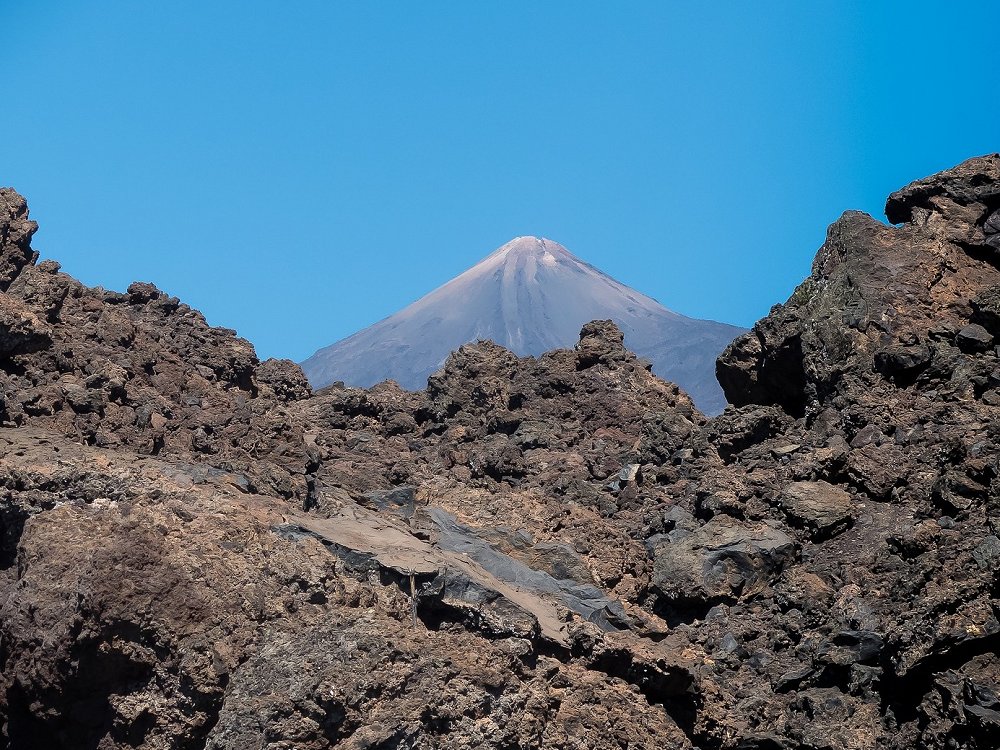
Ready yourself for a day of explosive landscapes when you step out for some walking in Tenerife and embark on an other-worldly journey through seas of lava found few places on the planet. Suitable for hikers of all abilities and fitness levels, Tenerife offers a variety of walks, even apart from those of Mount Teide, Tenerife, to exercise the hamstrings or take it easy as you absorb the eerie beauty of ancient lava flows and spectacular scenery.
Chinyero Loop
A mere one-hour drive on the TF-1 from your Abama residence is the Chinyero Volcano. It was last active in 1909, when for 10 days it threw stone and rock up to 20 kilometers away and sent ash plumes raining down for more than 130 kilometers further afield. With stringent seismic volcanic surveillance systems in place, it is, however, completely safe to visit, and offers stunning landscapes of contrasting vegetation alongside mystical black ash and lava flow fields. You’ll see kilometers of proof of the volcano’s furious eruption, which was visible from neighbouring islands.
The walk is a 6.6 km circular track and is one of the best family-friendly Tenerife tours, for those of you spending summer holidays with your children at Abama. There are various points at which the walk can be begun, but closest to Abama is the entrance from Santiago del Teide. Going at a relaxed pace and enjoying the varied landscape, the walk can be completed in approximately three hours and grants a spectacular introduction to the scenery of this part of the island.
Note! Keep an ear out for the Canary Islands Great Spotted Woodpecker, a sub-species endemic to the Canary Islands and distinguishable by the red markings on its stomach and head, whilst walking through the pine forests that comprise parts of the trail. It can be difficult to be spot, but its tapping reverberates around the forest.
Garachico
While not a walk in itself, the small town of Garachico is a must-see for its story of total devastation at the hands of the Trevejo volcano eruption in 1706. It caused serious damage, leaving the port covered in lava and burying part of the affluent town centre. Traces of lava flows are still evident surrounding the town, and, in fact, the only thing spared from the intense volcanic emission was the Puerta de Tierra, the port gate, which has stood the test of time and is still there today.
Considered to be Tenerife’s prettiest village, it offers plenty of short circular walks. On a bend in the road going up the hill out of town, a quick one can be done to see the “Monument to Canarian Emigrants”, a statue erected to pay homage the thousands of Canary Islands residents that left in search of a better life in South America. From here you have a magnificent view of the small town and the route the lava flows took during the 1706 eruption.
Should you feel like taking a dip in natural rock pools, fruit of the eruption as well, Garachico is also the town to do it. Located right next to the Castillo de San Miguel (XVI century), the natural pools of El Caletón are easily accessible via paths and stairs.
Fasnia Volcano
With a start point at Corral del Niño and an intermediate degree of difficulty, this route for walking in Tenerife may be better left for residents seeking a challenge. 7.2 km in length, the trips in Tenerife through the Fasnia Volcano route can be done two different ways, south or northbound, with the track starting at Carretera Los Roques Nº 1.
Fascinating not only for its varied topography, the route takes in the ruins of the San Joaquín Chapel from the XVII century; the Camino Real, constructed in the XVII and XVIII centuries and linking different towns; and many examples of unique local flora, including the Tajinaste picante (Echium auberianum), a plant of Tenerife that grows in abundance in pumice and at high altitudes.
However, it is the striking landscapes that may impress you the most. Majestic ancient volcanic cones swell from the ground in various colours and stand out against the newer pitch-black cones that burst up in the 1705 eruption, which lasted 8 days between January 5th and 13th. Although not the most destructive eruption of this era, it did force inhabitants to realise that a large volcano could potentially destroy their lives and property. Unfortunately, some 20 days later on the 20th of February, this fear was realised with the eruption of the Güimar Volcano.
Interestingly enough, aside from the Tajinaste picante, the vegetation in this zone is mostly comprised of brooms (Spartocytisus supranubius). They are used by local beekeepers, who make the most of the plants’ intense flowering to obtain honey which provides a truly unique flavour that simply cannot be found anywhere else in the world.
We’ll continue to explore walking in Tenerife in Part II of this series. Consider these a handful of personal favourites near your Tenerife apartment. Thanks to the island’s varied landscape and year-round wonderful weather, you can always find a path no matter your fitness level or month of arrival. Take water and sensible walking shoes! Temperatures can get hot and lava can be rough underfoot, but it’s all worth it for these wonders of the archipelago when you're looking for what to do in Tenerife.







